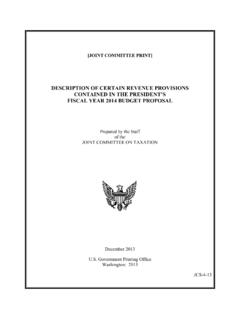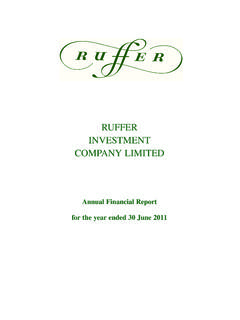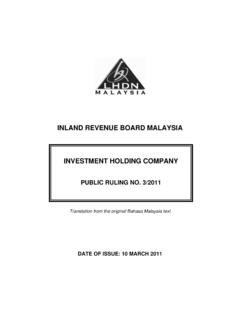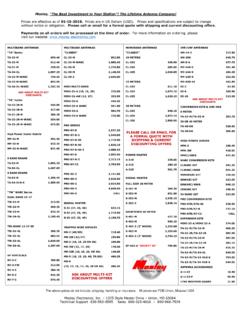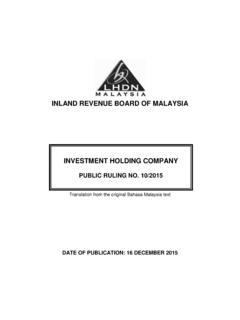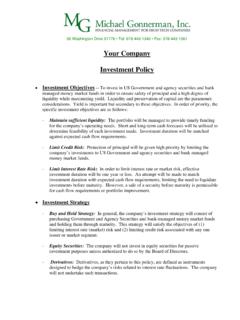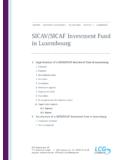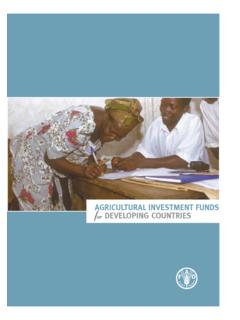Transcription of Sample Glossary Of Investment-Related Terms For ...
1 Sample Glossary Of Investment-Related Terms For disclosures To retirement plan Participants Version April 26, 2012 i Sample Glossary OF Investment-Related Terms FOR disclosures TO retirement plan PARTICIPANTS (Version ) General Information The Sample Glossary of Investment-Related Terms for disclosures to retirement plan Participants (the Glossary ) was developed by The SPARK Institute and the investment Company Institute1 as Sample language that can be used or adapted in complying with the requirement in new Department of Labor regulations2 that participant -directed retirement plans provide participants access to a Glossary of Investment-Related Terms .
2 It has been endorsed by the American Benefits Council ( ABC ), American Council of Life Insurers ( ACLI ), American Society of Pension Professionals & Actuaries ( ASPPA ), and Society for Human Resource Management ( SHRM ). The document is organized in two parts. Part 1 covers a broad group of general Investment-Related Terms . Part 2 covers Terms that are specific to insurance The Glossary defines Terms that are likely to apply to a wide group of plans and investments, but it does not include definitions for every retirement plan and Investment-Related term.
3 Certain Terms that a particular plan sponsor may want to include in its Glossary because of specific plan investment options and other circumstances may not appear. Moreover, none of the definitions represents the only way to define a particular term. Plans using the Glossary may want to customize or modify the language as they deem appropriate. Using the Glossary for purposes other than its intended purpose may not be suitable. Summary of Changes Included in Version The new Version contains revisions involving the term Cash Equivalent and a revision to the definition of Market Capitalization or Market Cap.
4 Additional information on the changes appears in the Version Control Log (Appendix A at the end of this document). * * * * * The SPARK Institute and investment Company Institute may release revised versions of the Glossary periodically. General inquiries and questions about the Glossary should be submitted to and 1 Members of The SPARK Institute and the investment Company Institute include a broad based cross section of retirement plan service providers and investment providers.
5 2 29 CFR 3 The Terms for insurance products are grouped separately for convenience in that not all plans offer these products. Plans that offer insurance products might want to combine both parts into a single set of Terms . ii * * * * * THE Glossary IS INTENDED TO BE A MODEL COMPLIANCE TOOL AND IT DOES NOT PROVIDE investment , LEGAL, OR TAX ADVICE. USE OF THE Glossary IS VOLUNTARY. THIS MATERIAL HAS NOT BEEN REVIEWED, APPROVED, OR AUTHORIZED BY ANY FEDERAL OR STATE REGULATORY AGENCY AS MEETING THE REQUIREMENTS OF ANY APPLICABLE RULES OR REGULATIONS.
6 IT IS NOT INTENDED, NOR SHOULD IT BE RELIED UPON, AS A SUBSTITUTE FOR APPROPRIATE PROFESSIONAL ADVICE WITH RESPECT TO COMPLYING WITH THE Glossary REQUIREMENT OF THE DEPARTMENT OF LABOR S participant DISCLOSURE REGULATION OR ANY OTHER REQUIREMENT. 1 PART 1 General Investment-Related Terms 12b-1 Fee: A fee assessed on certain mutual funds or share classes permitted under an SEC rule to help cover the costs associated with marketing and selling the fund. 12b-1 fees may also be used to cover shareholder servicing expenses.
7 Active Management: The trading of securities to take advantage of market opportunities as they occur, in contrast to passive management. Active managers rely on research, market forecasts, and their own judgment and experience in selecting securities to buy and sell. Aggressive: An investment approach that accepts above-average risk of loss in return for potentially above-average investment returns. Aggressive Growth Fund: An investment fund that takes higher risk of loss in return for potentially higher returns or gains.
8 AMEX Major Market Index (XMI): An index that is an average of 20 Blue Chip Industrial Stocks. Annual Report: A yearly report or record of an investment s ( , a mutual fund s or company s) financial position and operations. Annual Rate of Return: The annual rate of gain or loss on an investment expressed as a percentage. Appreciation: An increase in the value of an investment . Asset: Anything with commercial or exchange value owned by a business, institution or individual.
9 Examples include cash, real estate and investments. Asset Allocation: A method of investing by which investors include a range of different investment classes such as stocks, bonds, and cash alternatives or equivalents in their portfolios. See Diversification. Asset Class: A group of securities or investments that have similar characteristics and behave similarly in the marketplace. Three common asset classes are equities ( , stocks), fixed income ( , bonds), and cash alternatives or equivalents ( , money market funds).
10 Average Annual Total Return: The yearly average percentage increase or decrease in an investment s value that includes dividends, gains, and changes in share price. Back-end Load: A fee imposed by some funds when shares are redeemed (sold back to the fund) during the first few years of ownership. Also called a contingent deferred sales charge. Balanced Fund: A fund with an investment objective of both long-term growth and income, through investment in both stocks and bonds. 2 Barclay s Capital Aggregate Bond Index: A common index widely used to measure performance of bond funds.
